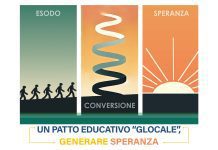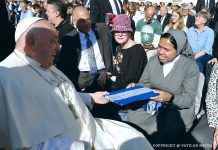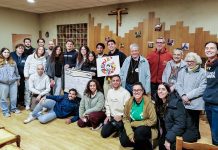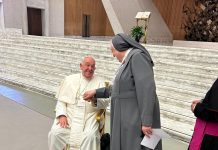Rome (Italy). On 9 July 2024, at the Holy See Press Office, the Press Conference took place for the presentation of the Instrumentum laboris for the Second Session of the XVI Ordinary General Assembly of the Synod of Bishops on the theme: For a Synodal Church: communion, participation, mission, to be held from 2 to 27 October 2024.
In his discourse, Card. Mario Grech, Secretary General of the General Secretariat of the Synod, spoke of the Synod as a formidable training to practice the art of listening, echoing Pope Francis’ statement, “We need to practice the art of listening, which is more than hearing. […] Only through such respectful and compassionate listening can we enter on the paths of true growth” (Evangelii Gaudium, n. 171).
He then described the phases of “intersection”, as listening to the People of God, to the pastors and theologians, with the aim of “seeking with instruments, certainly perfectible, that we have at our disposal, what God wants to say to the Church in this hour of her journey.”
After the celebration of the First Session, he explained, “the Synod has ‘returned’ to the local Churches, according to a virtuous dynamism of circularity according to which what is done at the center, through the work of some, is ‘returned’ to all the others. This is the spirit that animates the document towards October 2024, published on 11 December 2023, which gave rise to a second consultation of the local Churches, asking them to confront the Synthesis Report approved at the end of the First Session.”
The Instrumentum laboris is the final result of the work of 70 people: Bishops and Priests, Consecrated Men and Women, Lay Men and Lay Women called to give their contribution, in presence or at distance. After an intense working session held in Rome between 5 and 13 June, with the participation of 25 experts, including members of the Preparatory Commission for the Synodal Assembly, work continued with alacrity until publication. “A colorful concert of voices, a real polyphony, rich in timbres and accents, of which the Instrumentum laboris for the Second Session of the Synod Assembly is the result and testimony,” affirms Card. Grech.
Cardinal Jean-Claude Hollerich, as General Relator of the Synod, then focused on the fruits of the work of the local Churches that emerge from the reports received from the General Secretariat of the Synod, starting with the question, ‘How to be a synodal Church in mission?’ noting that “the Synod is already changing our way of being and living the Church regardless of the October Assembly (…) is already having a significant and multidimensional impact on local churches, stimulating spiritual, structural, and pastoral changes.”
Msgr. Riccardo Battocchio and Father Giacomo Costa, Special Secretaries of the Synod, therefore, took turns to illustrate the structure of the Instrumentum laboris, reiterating that it is not a definitive document, but a basis for discussion at the service of the preparation and conduct of the Second Session.
The Instrumentum laboris consists of 5 sections: an Introduction, the Foundations, and three central parts. In the Introduction, there is the missionary framework, followed by “the presentation of the journey of the last three years, marked by the willingness to listen and allow ourselves to be questioned.” It highlights with “immense gratitude” the beauty of the Church and the goals achieved, of the discovery of the method of conversation in the Spirit. The second part seeks instead to outline the Foundations of the vision of the synodal missionary Church, inviting to deepen the understanding of the mystery of the Church.
The perspective addressed in the first section is that of Relationships. “It is in relationship with Christ, with others, in the community that the faith is transmitted” (IL p.11). The Synod Assembly will in fact be called to give indications on some aspects of this relational dynamic: In Christ and in the Spirit (Christian initiation); For the People of God (charisms and ministries); With ordained ministers; Among the Churches and in the world.
Part II of the Journeys “highlights the processes that ensure the care and development of relationships, in particular union with Christ in view of the mission and the harmony of community life, thanks to the ability to face together conflicts and difficulties” through four “distinct but deeply intertwined areas in the life of the synodal missionary Church.” These are: an integral and shared formation; Ecclesial discernment for the mission; The articulation of decision-making processes; Transparency, accountability, evaluation.
The third perspective is that of the Places. “Recognizing the variety and plurality of ecclesial experiences, Msgr. Battocchio invites to overcome a static vision of the places and not to stop at a pyramidal image of the relations between the ‘ecclesial places’. (…) The place is no longer defined only geographically. It recalls a network of relationships and asks to rethink some aspects of the territorial articulation of the Church, enhancing the circular and dynamic relationship.”
If in the First Session there matured “a deeper awareness of the ‘characteristic signs of a synodal Church’ and of the dynamics of communion, mission, and participation that structure it,” in this phase and then during the Second Session, “Let us face the question of ‘how’. How can the identity of the synodal People of God in mission take concrete form in the relationships, paths, and places in which the life of the Church takes place?” concludes Father Giacomo Costa.




















